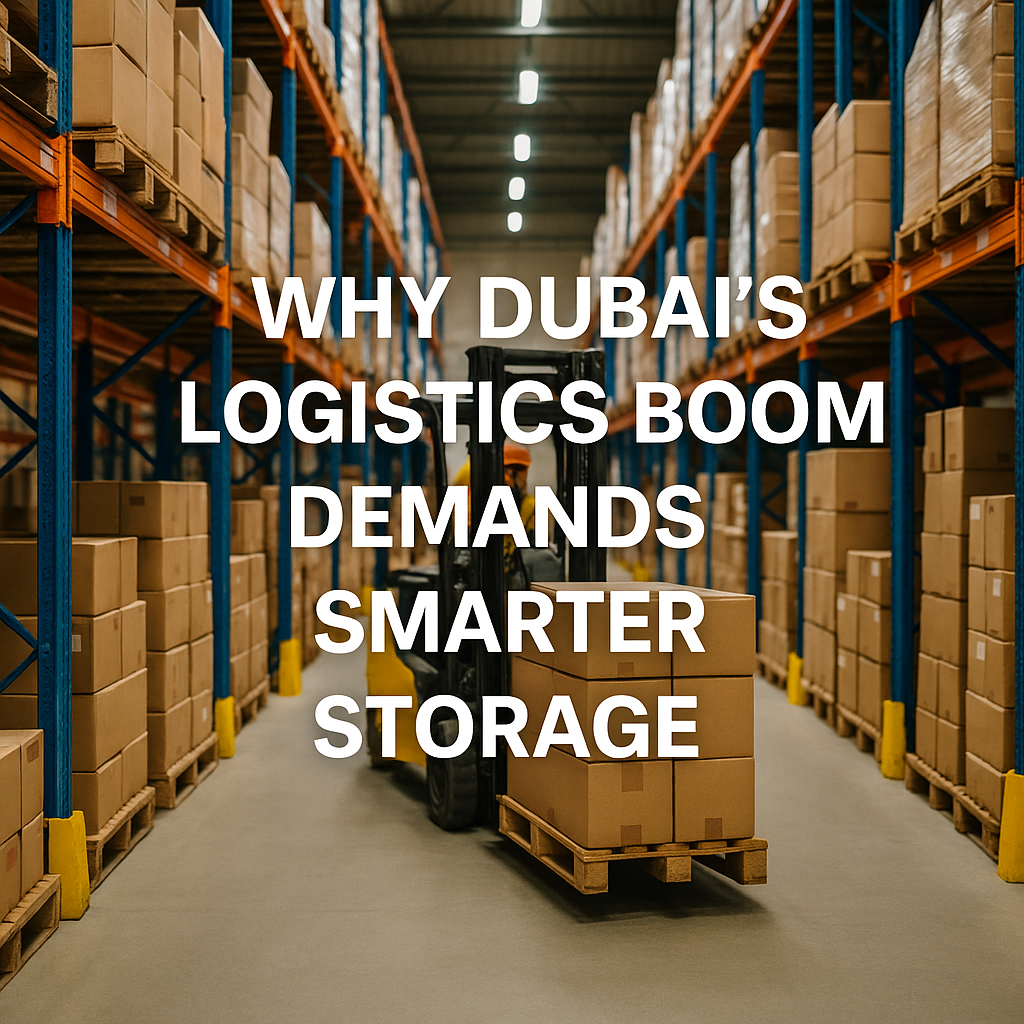
Dubai, UAE — In the last decade, Dubai has undergone a metamorphosis from a regional trade hub to a global logistics powerhouse. The city’s free zones, strategic location, and tech-forward infrastructure have made it a magnet for supply chain giants. But behind the glamour of growth lies a challenge that’s quietly escalating: how to store more, move faster, and waste less—within the same square footage. Enter smarter storage.
Logistics in Overdrive
Dubai’s logistics sector is growing at an exponential pace, fueled by e-commerce, re-exports, and multimodal connectivity. According to the Dubai Chamber of Commerce, the emirate’s logistics market is expected to exceed AED 300 billion by 2026. With that growth comes increasing pressure on warehouses to do more with less—less space, less time, and fewer resources.
The Pressure on Storage Infrastructure
Traditional racking systems—static, floor-heavy, and limited—are being outpaced by demand. As warehouses reach vertical and operational limits, it’s no longer about just adding shelves. It’s about intelligent storage systems that use automation, analytics, and adaptability to drive throughput.
“In Dubai, land is premium, labor is costly, and clients want 24-hour turnarounds. We simply can’t afford inefficient racking anymore,” says Omar Al Hashmi, logistics director at a multinational FMCG distributor based in Dubai South.
Smart Storage: The New Logistics Standard
Smarter storage encompasses technologies and design principles that boost efficiency without expanding footprint. Here’s how forward-thinking Dubai facilities are adapting:
- Automated Storage and Retrieval Systems (AS/RS): Robotics and AI-powered lifts now retrieve goods faster and more accurately than manual methods.
- IoT-Enabled Racks: Sensors on racking structures monitor load distribution, temperature, and inventory turnover in real time.
- Dynamic Layouts: Modular racking that can shift based on SKU velocity or seasonal needs is rapidly replacing static setups.
Notably, Dubai’s Jebel Ali Free Zone (JAFZA) and Dubai Industrial City are now home to smart warehouses built from the ground up to accommodate such technologies.
The E-commerce Catalyst
Dubai’s position as a regional e-commerce gateway has further accelerated demand for smarter storage. Platforms like Amazon and Noon require same-day or next-day delivery, which is only possible through optimized inventory management. Smarter storage systems enable micro-fulfillment centers and last-mile agility, which are increasingly becoming standard.
Sustainability & Compliance Pressure
Smarter storage is also greener. With Dubai targeting Net Zero emissions by 2050, logistics operators are under pressure to reduce energy consumption and improve space utilization. Intelligent racking helps companies achieve LEED certification and align with Estidama and other regional sustainability frameworks.
“Using automated storage has cut our power usage by 20% and allowed us to reclaim 15% of warehouse space,” notes Rami Al Khatib, operations manager at a major electronics wholesaler in Al Quoz.
The Risk of Standing Still
Companies relying solely on outdated racking systems are risking more than inefficiency. They face higher operating costs, slower delivery times, and ultimately customer dissatisfaction—a death knell in a market where logistics excellence is expected.
Moreover, compliance with evolving fire safety, seismic standards, and weight load regulations is becoming stricter. Smart systems often come with built-in monitoring that aids both safety and audit-readiness.
Conclusion: Invest in Intelligence
Dubai’s logistics boom shows no signs of slowing. But to keep pace, the city’s warehouses must evolve—not just in size, but in strategy. Smarter storage is not just a response to growth—it’s the infrastructure of the future.
For companies looking to scale in the UAE’s dynamic logistics landscape, the time to rethink storage isn’t tomorrow. It’s now.